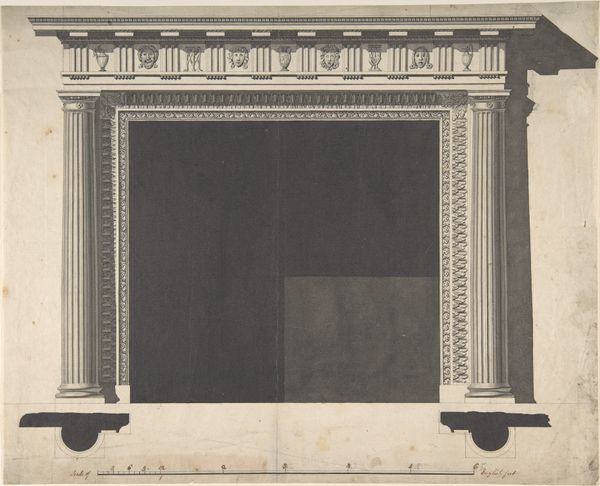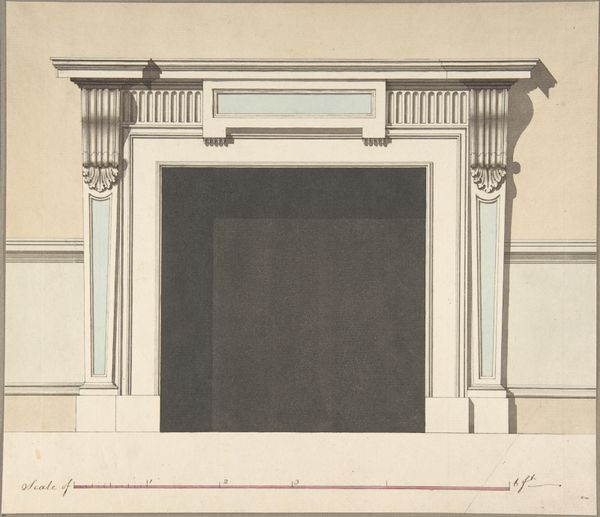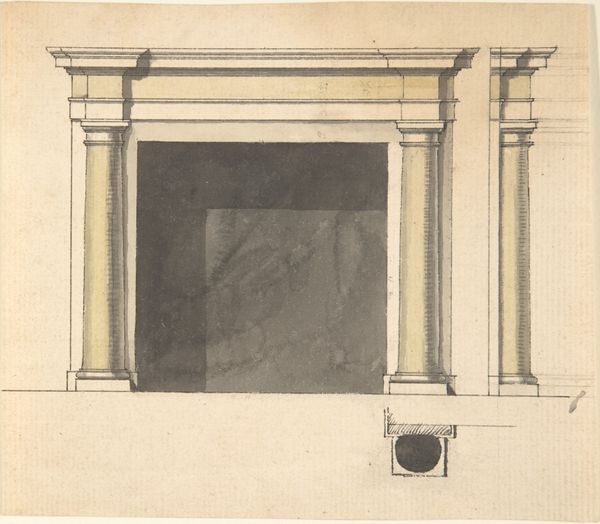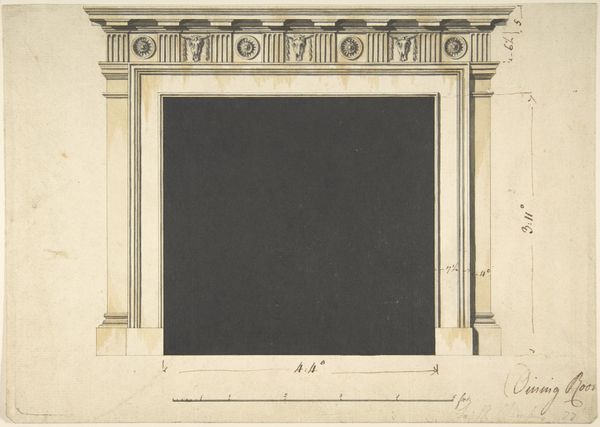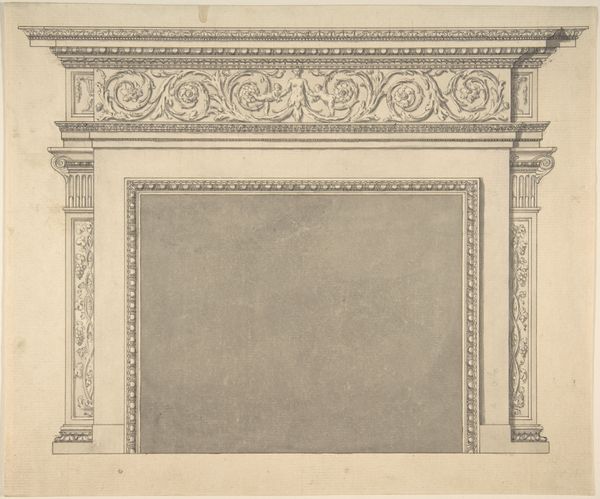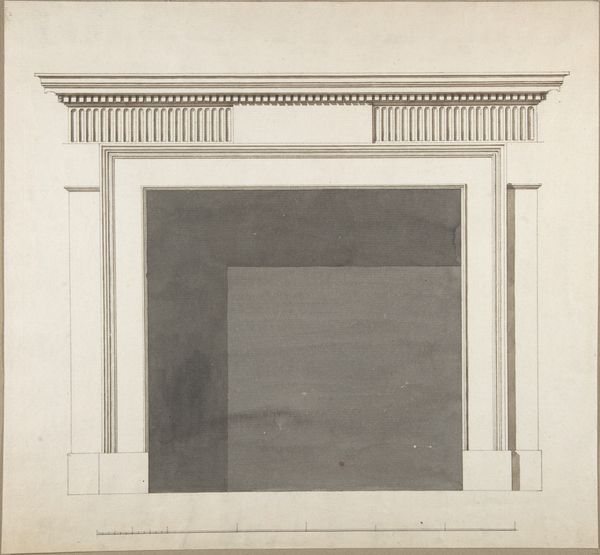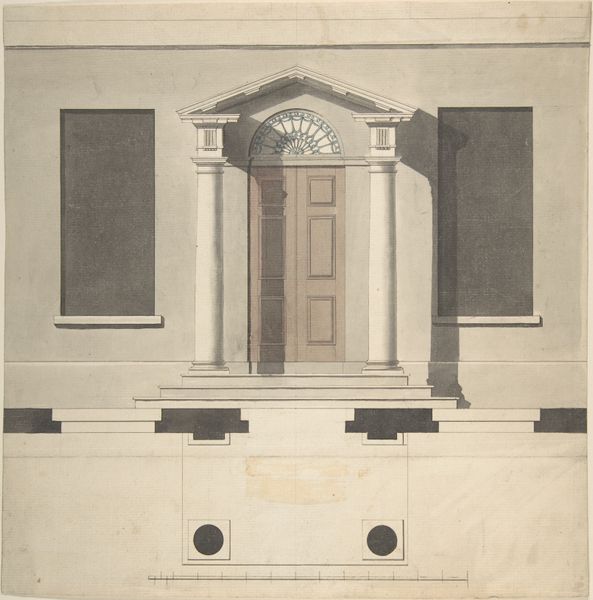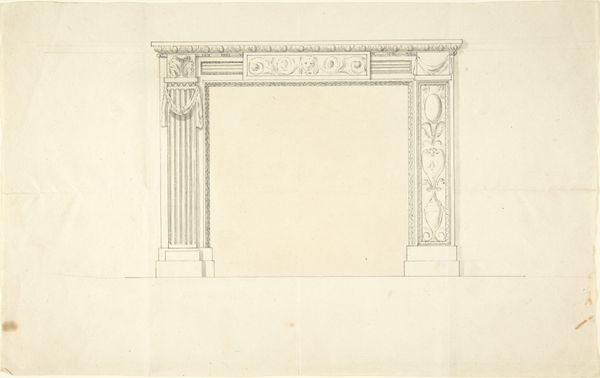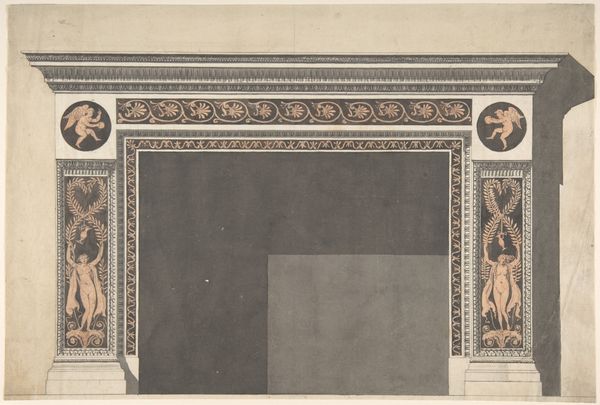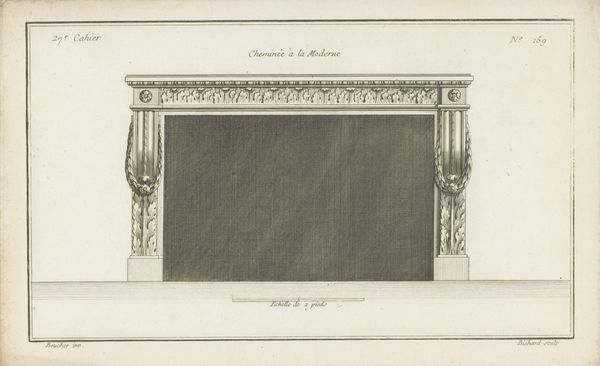
Design for a Chimneypiece with Ionic columns, a Frieze, and Cornice 1743 - 1796
0:00
0:00
drawing, print, etching, engraving, architecture
#
drawing
#
neoclacissism
# print
#
etching
#
classical-realism
#
form
#
geometric
#
arch
#
line
#
engraving
#
architecture
Dimensions: sheet: 11 1/4 x 14 5/16 in. (28.5 x 36.4 cm)
Copyright: Public Domain
Curator: Look at this, it's rather imposing! I mean, even as a drawing, there's a definite presence. Editor: Absolutely, almost severe. But there's something reassuring in that symmetry, isn't there? Like a promise of order. I feel soothed just gazing at the formal qualities. Curator: Well said. This is Sir William Chambers's "Design for a Chimneypiece with Ionic Columns, a Frieze, and Cornice," created sometime between 1743 and 1796. What strikes you compositionally? Editor: Those strong vertical lines formed by the Ionic columns...they're really the backbone of the piece. Then you have that beautifully detailed frieze above with figures, lending the design a human touch. But all so regimented, controlled...did anyone actually warm themselves in front of a fireplace based on this design? It feels more suited to a temple than a cozy home. Curator: Function is indeed subordinate to form here. Chambers was a key figure in the Neoclassical movement. Think of this as an exercise in pure, rational design – line, geometric order, proportion. See how the etching and engraving techniques contribute to that sense of precision? There is such control over light and shadow. Editor: True, the clean lines create an undeniably powerful statement. I suppose the geometric severity allows your eyes to travel along the vertical and horizontal lines in a kind of reverie, right? The mind almost fills in the black rectangle where the fire would be. Like, there might be an emotional core beneath all this classical realism, almost! It’s architecture inviting reflection. Curator: Precisely. That play of positive and negative space enhances the form. And notice the subtle gradations in tone achieved through printmaking—all serving to articulate the architectural elements. It’s about refining ideal forms through measured technique. Editor: The stark contrast between the black void for the firebox and the light, airy rendering of the columns above actually lends a curious levity to what might otherwise feel really monolithic. Even though it's just lines and geometric form at work. What did Sir William even dream about? Curator: A fascinating proposition! But perhaps, to the formalist, the question of the dream is an intrusion. The power resides within the resolved design itself. Editor: Maybe, but still, imagining life breathed into it intrigues me endlessly! Thanks for offering some context.
Comments
No comments
Be the first to comment and join the conversation on the ultimate creative platform.
